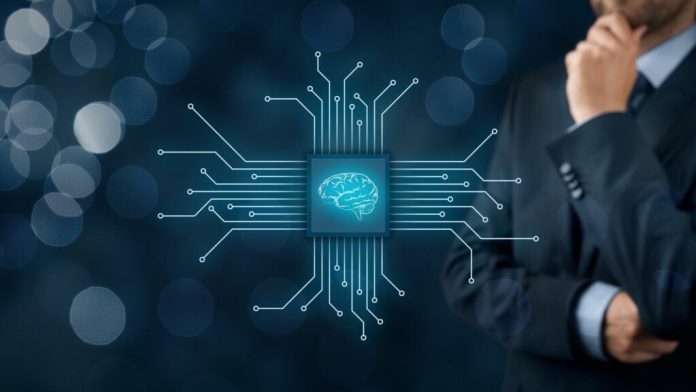AI (artificial intelligence) has become one of the biggest buzzwords in 2023, although this groundbreaking technological conception has been years in the making, and it is set to transform the landscape of society.
It would be fair to assert AI has provoked plenty of debate, with some quick to champion its merits, while others have expressed their reservations and have harbored feelings of mistrust about what it can offer.
In this guide, we will provide a quick overview of how to use AI before discussing how it is transforming various industries, so read on to learn more.
Uncovering the AI hype
Well, to say AI is useful is a bit of an understatement. Generative AI is starting to become widely adopted by many businesses, and it can be used to streamline certain processes, whether that be through executing text-based tasks or image/video-based tasks. For example, the rise of programs such as ChatGPT and Bard are sophisticated in their own right and they have helped infuse AI with better results. Moreover, these tools have captivated the attention of people in a way few may have possibly imagined.
Yes, with the power of AI, writing content for say a website landing page can help attract more eyes to a site and deliver higher levels of traffic. AI is canny at being able to condense large amounts of information and repackaging in a way that helps make it pop and resonate with a wider target audience.
If anything, it is a reliable assistant for millions of workers, solving complex problems. But to maximize it, workers need to test an AI system to check its accuracy, and of course, collate data meticulously to reap the rewards.
Moving the needle
In a short space of time, AI is already making significant headway. You only have to look at what is happening in the health industry to see how AI is shaking things up. There have been suggestions that by 2030 people could wear AI sensors, and that real-time data for patients will be sent to doctors that may be flagged for attention or resolved autonomously.
At the moment, AI has been playing a key role in terms of detecting early signs of Alzheimer’s and cancer, which in turn, could provide better outcomes for patients when diagnosing such diseases.
Measurable sensors will not only monitor blood pressure, but they will also be able to monitor glucose and cholesterol levels. AI will become more instrumental in the research and development stage, especially when it comes to curing many diseases and the merits of it can’t be overlooked.
Financial disrupter
Banking is another classic example of how AI is starting to make serious inroads. This isn’t just the case with online banking where enhanced security measures have protected consumers such as two-factor authentication and biometric identification to ensure they can make digital transactions without their data being compromised. No, it is also evident in the way that fintech companies have released more groundbreaking services and products.
Indeed, AI has tried to tailor its expertise and experience to meet the needs of its customers, and the process will inevitably become more streamlined over time.
AI in gambling
AI has also crept into online gambling and this has been used to monitor the activity of bettors. Data will be gathered on players to assess particular behaviors, and it will be easier to establish whether certain players are at risk of gambling-related harm. Normally, AI will be able to offer measures that may, in turn, cause players to take a self-imposed break.
However, for those who don’t want any constraints, there is a method on how to get around GamStop. Yes, players who are after more freedom and flexibility can access non-GamStop sites, and these operators will allow you to join without verification, and you will be able to wager with crypto.
Valuable gains
Generative AI is already making its mark, and that can be measured by its economic value. Research carried out by global consulting firm McKinsey suggested that the potential impact for the retail industry could be worth anywhere between $400billion to $600billion a year.
Interestingly, the report showed that AI technologies could automate work activities that absorb between 60 and 70% of a worker’s day and ultimately it will make staff more productive. This is something that will become more apparent over the next five years, and remember, AI is only in the nascent stages.
If we place AI into a wider financial perspective, the UK’s entire GDP in 2021 for example stood at $3.1trillion, but AI could add as much as $4trillion to the UK economy annually across many industries, so embedding AI generative software will become increasingly more ubiquitous.
Of course, the pace of the workforce may change and some jobs could be lost to AI, but as we have seen, AI shouldn’t be viewed as the enemy. If anything, it is an invaluable resource that can enhance the way we function in our everyday lives, and make businesses more profitable too.
Conclusion
From what we have seen, the AI train has only just pulled out of the station, but these are exciting times for many industries and now is the time for firms to embrace it and jump on board. To the uninclined, AI may just seem like a substitute for the human decision-making process, but that couldn’t be further from the truth.
If anything, AI should be viewed more through the lens of a natural support system that can foster positive change and make more businesses more versatile moving forward. AI is not a problem child and it can co-exist successfully in today’s society.
This guide has tried to illustrate how AI is forcing the workforce to rethink its approach to everyday tasks and the economic value of AI will be enormous in the years to come. As mentioned, AI shouldn’t be perceived as the enemy, and with more developments to come, you should watch this space!






